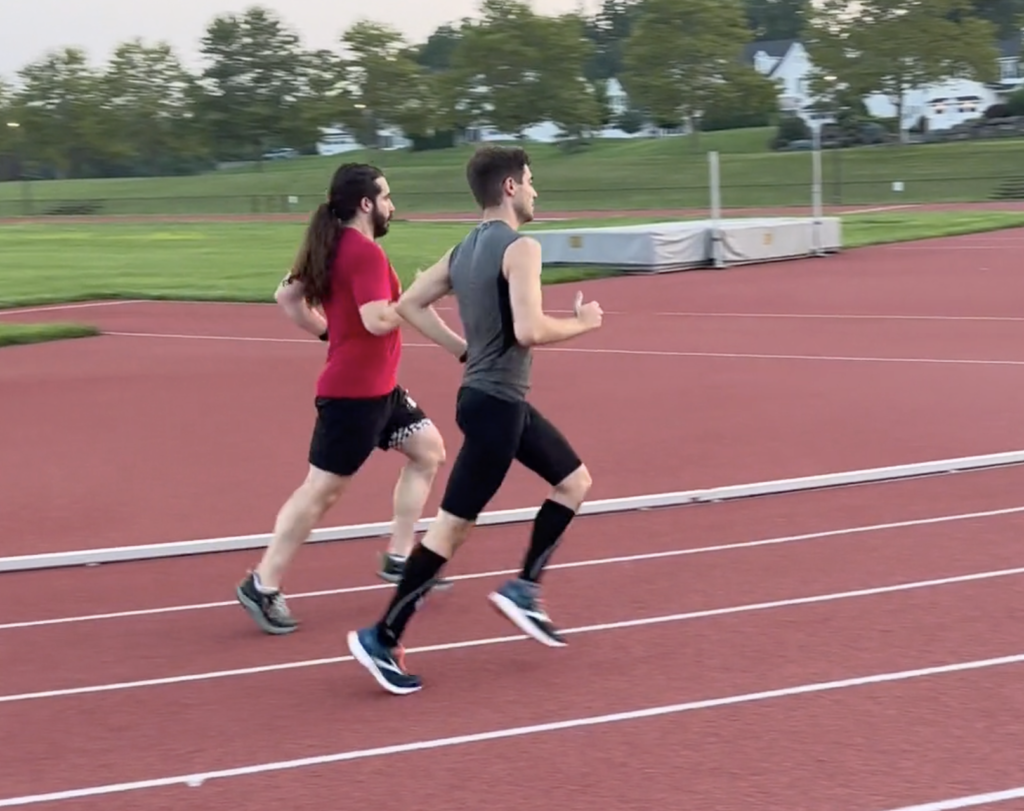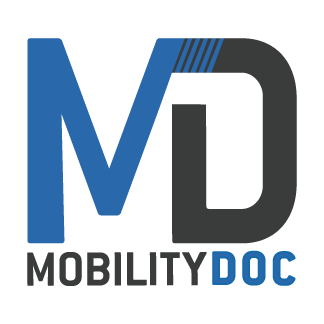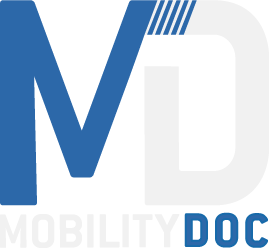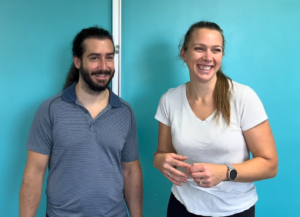Have you been experiencing pain just below your kneecap, especially after activities like jumping or squatting? You might be dealing with patellar tendinitis. Don’t worry, this common overuse injury is treatable! Today we are exploring why you’re experiencing this pain in your knee and our 3 favorite patellar tendinitis exercises. That way you can get back to your favorite activities pain-free in no time.
What is Patellar Tendinitis?
Patellar tendinitis, also known as jumper’s knee, is inflammation of the patellar tendon. This inflammation comes from repetitive micro-tears in the tendon caused by overuse or tight quad muscles. Activities like running, jumping, and squatting with improper form put significant stress on the patellar tendon. This onset of pain usually comes after a break from these activities. If you have time off of your favorite activity, make sure you pay extra attention to your recovery work afterwards. That way you’ll prevent issues like this from popping up!
Hold on, Isn't that Runner's Knee?

While both patellar tendinitis and runner’s knee can cause pain around the knee, they affect different structures. Patellar tendinitis focuses on the pain right below the kneecap, targeting the patellar tendon. Runner’s knee, on the other hand, refers to pain around the knee joint, caused by irritation of the surrounding tissues.
The Mobility-Doc Method To Approaching Patellar Tendinitis
Now that we understand the culprit, let’s explore how to address patellar tendinitis. We look at mobility in 3 facets. Wholistic mobility of any joint combines flexibility, stability, and strength training to heal the tendon and prevent future issues:
1. Mobilizing the Connective Tissue
Our bodies are intricate networks of muscle and fascia (connective tissue). As we exercise and our muscles grow they create micro-tears. These micro-tears if not well taken care of form adhesions and our muscles begin to shorten. Short muscles means tight fascia which can restrict movement putting extra strain on the tendon. We are going to use self-myofascial release techniques around the knee and our quad to break up some of that restriction and get us moving a little better!
In the video below, we cover 3 ways to do this, but for the purposes of this blog (so it doesn’t turn into a novel) we are focusing on what we think is most effective for this form of tendinitis.
Muscle Scraping
Even though we are focusing on knee pain the problem is stemming much higher than where the pain is felt! Our quadricep muscle is pulling up on the tendon which causes our inflammation and discomfort. When we go to use our muscle scraper, we not only want to go all the way around the knee, but up into the quad!

Take time to frame out the entire knee as well as the whole the quad muscle before staying on any problem areas. Using a metal scraping tool is best so you can get some tactile feedback! When you hit a problem area you’ll feel bumpy gravely reverberations in your hand. If you have a stone tool, that’s OK! You’ll just need to work a little harder and won’t feel the feedback in your hand. Search for 1-2 mins before focusing in on painful areas! Don’t spend too much time there either. 30 seconds will do! Muscle scraping can be very effective for breaking up adhesions so don’t do this every day. Your body will need a break from it.
If you don’t have a muscle scraper, we highly recommend investing in one! We love using Sidekick tools. For the price point they offer, you won’t find a higher quality tool! (We’re using the echo – check it out HERE using our affiliate link!)
Not sure which one to buy? Read about the differences in tools here!
2. Lengthening the Muscle
As we know, tight quadricep muscles pull on the patellar tendon, contributing to inflammation. Stretching exercises that target the quads are exactly what we want to do! Any quad stretch will do, but whichever one you choose your knee really should be bent. If it isn’t you’re probably not getting enough of a pull on the whole muscle. That’s why we love the couch stretch.
The Couch Stretch
This stretch can be done almost anywhere. What’s even better is it takes a lot of variables out of the equation. Form matters, so adding some stability with the floor and chair is always good! Place your foot up behind you on a couch, bench, or chair. Then, squeezing your glute and pushing into your front foot, try and straighten up. Make sure you’re not arching through your back! Hold each side for at least 3o seconds.

Pro Tip: Changing the distance of your knee to the couch or chair will greatly impact your ability to get upright! Play around with the distance until you feel a comfortable stretch in the front of your leg.
3. Strengthening the Quad and Tendon
Strengthening exercises are essential for long-term recovery. Exercises that require level changes and anterior leg strengthening are going to be very important!
Single Leg Pistol Squats

We recommend trying a single leg pistol squat to a box or chair. The focus is on the eccentric contraction (the way down). You want to lower down slowly with control. Make sure your knees track over your toes, not to the inside. If your tendon is very cranky, we suggest standing up with 2 feet until it feels more comfortable. Work up to doing 3-4 sets of 10 on each leg!
Pro Tip: What is most important with this is you want high reps and low weight! If you’re doing seated leg extensions use a light band or very light weight on a machine!
Watch Our Patellar Tendinitis Exercises Video : Your Path to Recovery
Remember, incorporating patellar tendinitis exercises into your routine is vital for healing and preventing future pain. If you have any questions or aren’t sure if this is right for you, make sure you seek out professional help. A physical therapist can create a personalized exercise program tailored to your specific needs and ensure proper form to maximize benefits and minimize risk of injury. (Don’t have one? Come see us!! We do in person and virtual consults!)
By combining these strategies and incorporating patellar tendinitis exercises, you can overcome this common injury and get back to enjoying your favorite activities pain-free! Reach out on our socials if you have any questions!
I Knee(d) Pain Relief!
Bad pun… I know. But as I sit here writing this blog I can’t help but resonate with it. After suffering an injury back in 2014 my knee still reminds me to this day. We all have ups and downs and so do our bodies. That’s why when my knee was having it’s worst flare up yet, I knew I needed to do something. Lucky for me… I know some people 😉.
I turned to Mobility-Doc’s MDRx Knee Bulletproof program. Should I have started it sooner? Yes. But within the first 2 weeks I felt relief. My knee was less zingy, and stopped hurting when I went down the stairs (which it had been every day for about a month prior). Take it from me, it’s not worth it to wait! After just 15 minutes a day I’m feeling great again. I finished the program to completion but I know if it starts to crank again I’ll be able to turn back to the MDRx Knee programming. Join me and start your recovery journey today! Why? Because you too deserve to live a pain free life.







